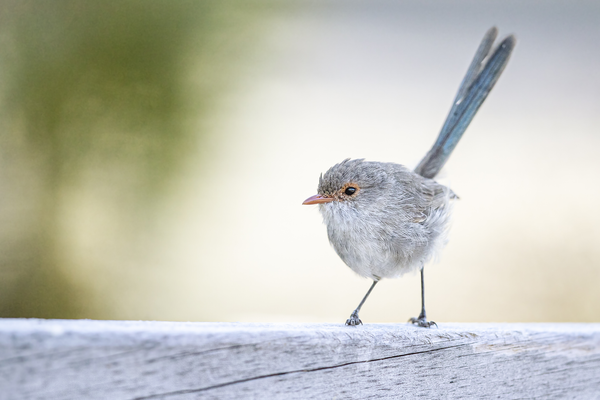A bird in flight is poetry; a bird on the ground presents a conundrum. Watch a sparrow or other songbird bobbing and scratching around the forest floor and it’s easy to wonder: How do they support their weight on such skinny little legs?
The first reason bird legs look strangely thin is that the rest of their body is mostly covered by feathers, which can dramatically magnify its apparent size, says Julia Clarke, a paleontologist who studies bird evolution at the University of Texas at Austin. Birds’ relatively meatier thighs are tucked underneath their feathers, and most birds have scaly lower legs, Clarke says, which makes these limbs look oddly small and naked. Birds that have feathers down to their toes—such as owls and some domestic chickens—appear to have thicker shins than their bare-legged cousins.
But it’s not just a visual illusion: bird legs have some genuine differences from legs of other living animals. Birds are descended from theropod dinosaurs, a group of bipedal animals that ranged in size. Some were as small as modern sparrows, while others were huge, such as Tyrannosaurus rex. Whereas most mammals that can walk bipedally—such as bears, chimpanzees and humans—stand on their heels, dinosaurs walked on their toes and the front ball of the foot, with the remainder of their foot bones elongated and held off the ground. Living birds kept some of these features. As they took increasingly to the air, however, birds developed some divergent traits. Bird relatives such as Velociraptor had relatively short thighs above their long shins and toes, but they held those thighs more or less vertically, like ours. Travel down the bird family tree toward modern families, however, and those thighs gradually change orientation. “In birds, that upper leg bone is held mostly horizontally, and it’s kind of tightly bound into muscle groups that attach to the trunk of the body,” Clarke says.
On supporting science journalism
If you're enjoying this article, consider supporting our award-winning journalism by subscribing. By purchasing a subscription you are helping to ensure the future of impactful stories about the discoveries and ideas shaping our world today.
Why did this shift occur? Maintaining balance as a biped is a tricky business, as anyone watching a young toddler walk can attest. Without a strong center of weight supported by robust legs, any two-legged animal risks toppling. Bipedal dinosaurs kept on their feet by distributing weight across long necks and bony tails. But as bird ancestors increasingly took wing, Clarke says, the development of powerful flapping chest muscles in birds shifted their center of mass toward the front of the body. In order to maintain balance, bird torsos shrank. Their thighs shifted horizontally and became bound to the body, effectively becoming part of the hip. The knee, in turn, became the highest moving part of the leg.
Birds developed other anatomical tricks as well. Over time, the three metatarsal bones found in dinosaur feet transformed to a single, fused bone in birds that was both light and strong. Birds developed muscular changes as well, Clarke says, and most of their leg muscles became consolidated in the thigh, which is joined to the torso. The lower legs and feet, meanwhile, are operated by bundles of superthin tendons that run from the knees to the toes.
That same tendon system locks bird toes in position while they perch, allowing them to sleep without falling. “No other animal has this tendon system that allows them to locate the strong muscle action close to the body,” where it’s hidden under the feathers, Clarke says.
Not all birds have stick-thin legs, of course. Birds that spend a lot of time on the ground—or make a living by grabbing prey—still have characteristically slender tendon-operated legs, but these are often more substantial than those found on their songbird relatives. Flightless birds such as ostriches and cassowaries, for example, have noticeably larger calf muscles to bear their greater weight.
Lightweight songbirds are less dependent on walking. “The primary way most of them get around, at least when they need to chase something or escape from something or cover a lot of ground, is by flying,” says Stephen Brusatte, a paleontologist at the University of Edinburgh. “So the legs wouldn’t need to be so muscular.”
When looking at bird legs, in other words, it’s important to remember that they look the way they do because of birds’ evolutionary history, one that’s been heavily shaped by past lineages’ embrace of the air. For most birds—especially those that fly—the muscular limb is the wing, while legs tend to look puny by comparison.
“It’s fair to say that the extremes of living birds [weren’t] reached until after the origin of flight,” Clarke says.
Whatever their origins, those skinny legs are now a central part of modern birds’ appeal and have helped to inspire Internet nicknames and taxonomies. The apparent thinness of birds’ legs emphasizes their body’s roundness and creates the cheerful-looking hops or darting runs that so delight us. Their legs might look odd, but we wouldn’t have it any other way.
